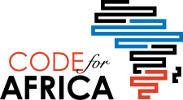Balloon mapping provides individuals or groups with a low-cost means to create a running record of events in map form, one that is temporally accurate and easy to share.
What is Balloon Mapping?

Credit: Knowledge Commons DC
Today, aerial imagery—pictures that are taken from above the Earth’s surface—are typically made by satellites and planes. But in the days before such inventions, balloons and kites we’re a handy way to obtain a view from the sky. Climate scientists have long attached weather sensors called radiosonde to obtain measurements from various altitudes. The concept of balloon mapping is pretty simple, attach a camera to something that flies and take pictures of the ground. While the idea of floating something in the sky is indeed simple, high level applications include Google’s Project Loon — focused on delivering long-range Wi-Fi via balloon and long-term surveillance missions run by the US military.
Balloon mapping provides individuals or groups with a low-cost means to create a running record of events in map form, one that is temporally accurate and easy to share. This tutorial, made with assistance from the Public Laboratory, will take you through a process of building and deploying a do-it-yourself satellite.
When is it useful?
In most cases, freely available aerial imagery is the best choice for a journalist illustrating a story with a picture from the sky. However, satellite imagery made available through companies like Google or Bing Maps are typically one to three years old and often feature winter images to minimize visible area covered by trees. For breaking news stories like a natural disaster or a protest, obtaining recent or near real-time satellite imagery is critical and expensive. A tethered balloon on the other hand is able to fly at much lower altitude and collects images at around 3 centimeters spatial resolution (3cm in real space equals one pixel) as opposed to a 50cm average in Google Earth and 250m in LANDSAT satellite imagery.
Balloon and kite mapping is an appropriate tool when you need high resolution, time sensitive imagery from a potentially contentious location. Balloon mapping has already been used to document effects of the 2011 Deepwater Horizon Oil Spill, the size of Occupy Wall Street protests, and to contest official maps in Lima, Peru that left residents of informal settlements of the official city map.
According to the Public Laboratory, mapping can be used by those in power to control territorial narratives. “Grassroots mapping attempts to invert this dynamic by using maps as a mode of communication and as evidence for an alternative, community-owned definition of a territory.”
Required Materials
The engineering of a balloon mapping rig is very simple and intuitive. The materials—except for helium—can be created relatively cheaply (about $150USD upfront) and reused. Basic elements include: a point and shoot camera with continuous mode, a weather balloon, high-strength lightweight string (kite string or fishing line) with a reel, rubber bands, a plastic bottle, zip ties, and tape. Alternative constructions include materials like Mylar emergency blankets instead of balloons and a trash cans for housing the camera. The Public Laboratory sells a kit that includes most of the required materials but you can also assemble your own.

Credit: Public Laboratory
Aside from the materials listed in the kit above, you need is a good, cheap camera that has a continuous shooting mode. A continuous (or burst) camera mode is vital since you will want to collect multiple images while flying and this setting allows you to do so. A list of suitable cameras can be found here. Physical and digital hacks to ensure continuous photography will be covered in the following flight preparation & construction step.
You will also need helium to fill and lift the balloon. Helium is lighter than air so it floats to achieve its natural equilibrium. The size of the balloon and the amount of helium you use determines how much your balloon will be able to lift. The 2 meter diameter balloon included in Public Lab’s balloon mapping kit can lift 3288.5 grams. You must consider the weight of your all in-air equipment to determine if your rig will fly. For other size balloons this set of charts outlining the physical properties of lighter-than-air gases is useful.
Flight Preparation & Construction
There are two distinct elements to prepare for prior to launching your flying camera rig. First, it is important to research the location you are going to map including the regulations governing tethered balloon flying and the geography of the area. Going on a scouting trip can help you identify potential obstacles like trees/power lines and give you a feel for local weather conditions. Second, you must gather and assemble the material components of the balloon mapping rig.
When researching the area you plan to map, it is a good idea to visit first before you fly. Tell the people who live where you will be mapping that you will be there, print out a satellite map of the area to take notes, and most importantly research the government rules that apply. In the US, tethered balloon flight is regulated by the Federal Aviation Administration (FAA) and they have rules governing the size of the balloon, the amount of weight it can carry, and how high the balloon can fly without explicit government permission.
Local weather conditions are very important since high-wind can make capturing clear images from a stable camera very difficult. In such conditions a kite may be better. Remember don’t put anything in the air you aren’t comfortable losing.
Once you have figured out what you want to map and researched area and regulations governing flight, you can assemble your materials for flying. After selecting and testing your camera for continuous mode, you can build a light weight rig to protect the camera from falls and provide additional stability. The cheapest option is to build this housing from a PET plastic bottle and rubber bands.
Video and images courtesy of the Public Laboratory:

Credit: Matthew Lippincott, Public Laboratory
Now that you have your rig built, it’s time to fill up the balloon (this can be done on-location or if logistically feasible beforehand). Having a teammate is really helpful for this step because the balloon will fill up really big and needs to be held. One person should fill the balloon and the other should hold it as it fills to make sure it doesn’t fly away or hit something sharp.
With a full balloon in hand, it is time to attach the housing to the balloon. The simplest way to do this is to attach the swivel clips included in the kit to the line tethering the balloon. Without the clips you can also use a piece of line to tie the rig to the bottom of the balloon but make sure it is tight so that it doesn’t fall.
The final piece of the puzzle necessary to set up before flying is to place the camera in its housing with a continuous shooting mode engaged. Depending on the type of camera you have, you can either physically press the shutter button with a piece of cardboard and a rubber band or you can enable a time lapse mode in your camera by using an existing feature or (if you have a point-and-shoot Canon camera and are technically inclined) adding the Canon Hack Develop Kit (CHDK) to your SD card.
Piloting & Stabilization
Once your balloon rig is set up and taking pictures, let it fly! This step is where the fun and the finesse begin. You can control the altitude of the balloon using the reel that is holding the line. The more line you release the higher the balloon can fly. The shorter the sting, the closer the balloon stays to the ground. The experience is kind of like fishing in the sky. The altitude of the balloon is important because pictures from similar heights can be stitched together to create an image equivalent to one zoom level on a map.

Credit: Public Laboratory
At first keep you balloon at a low altitude and walk the area you want to map. The height of the balloon is roughly equivalent to the ground area you are recording, so a balloon 10 meters in the area will capture about 10 square meters. Walking a predetermined path, or transect, will ensure that you can capture all of the ground area you want.
Once you have done a set of transects at one fixed altitude, give the balloon more line and let it fly higher. The higher it is, the more it captures (but at less resolution). You can repeat this process as many times as you want. The only limits you have are the line distance, the disk space on your camera, and your camera’s battery life.
As you walk your transects it is important to watch the stability of your camera rig. The best images are captured when the rig is stable and pointed at a 90 degree angle towards the ground. A swinging rig is a bad sign since obliquely angled images will have to be stretched to make a flat, planimetric map.
Techniques for maximizing stabilization are grounds for experimentation amongst the balloon mapping community. Some simple solutions include adding multiple lines to one balloon to increase the tension and reduce the influence of the wind. This technique works well for low-altitude balloon mapping but is difficult when the balloon is high in the air. It also requires an almost dance like coordination between the two balloon pilots. A more intricate solution is the picavet system for stabilization. It requires some skill and weights more but it works well especially for mappers using high-end cameras.
Image Processing

This step is where your pictures become a map. Depending on the amount of time you have been flying your balloon, you should have lots of images and many of them won’t be clear enough to be useful. The best images are clear–without distortion from shaking or overexposure–and pointed vertically–directly toward the ground. It is also helpful to prioritize good images that cover the largest area possible.
You can select pictures on your desktop using an image preview features or you can download a copy of MapMill to enable the Public Lab community to help identify useful images.

Credit: Sam Pepple, Sample Cartography
Once you have selected a set of useable images, you can then begin the process of stitching these pictures together into a bigger map. You can do this using image processing software like Adobe Photoshop or by using the Public Lab’s MapKnitter browser-based editor. MapKnitter allows you to upload, overlay, stretch, and resize your photos with a Google Maps satellite view as a reference.
By using MapKnitter, you will also have many tools available for exporting and sharing the maps you just made with the world.








